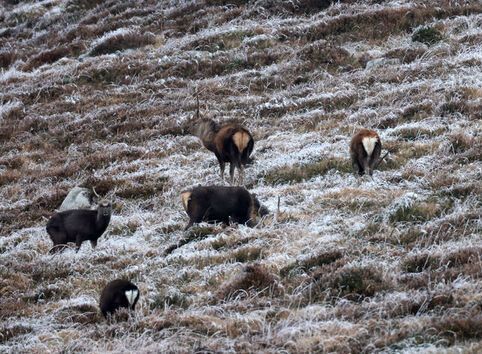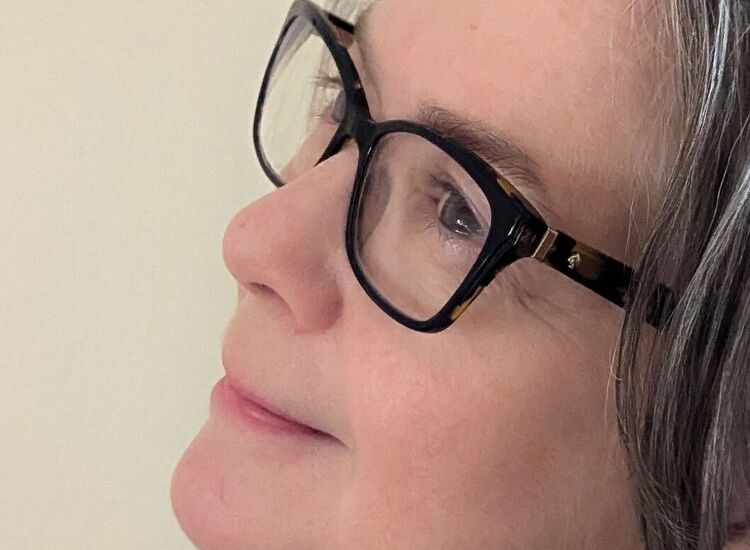From the exhibit at the Michael J Murphy Winter School.
By Gerry Adams
Two weeks ago I was pleased to speak at the Michael J Murphy Winter School in Tí Chulainn in the shadow of Sliabh Gullion.
Who is Michael J Murphy I hear you ask.
Michael was a seanachai, a sage and a citizen. I first came across his writings when I was in Long Kesh.
Some of his stories have stayed with me until now. He wrote six plays, ten books, was an accomplished poet, a photographer and a broadcaster.
Michael was born in Liverpool in 1913. He came to Dromintee in 1922 with his parents and family.
When he left school aged 14 he started to work as a farm laborer. He began to write down the stories he heard from the people he worked with.
He also took thousands of photos which he developed himself.
At a time, with some notable exceptions, few photographers recorded the lives of poor people or working people, particularly in rural communities, Michael’s photos are a treasure trove of people at work, at play or relaxing in their homes or in the field. In the ordinariness of their lives.
He was a man with progressive social views and a belief in social justice. He also loved the landscape, particularly around Sliabh Gullion along with Gullion itself.
His writings about the countryside around here are particularly uplifting, lyrical and enchanting. Many of our songs, folk tales and poems, particularly in the Gaelic tradition, have been kept alive because they are part of this living tradition.
Michael devoted his life to the preservation of important ordinary every day matters. He presents us with an insight of the lived experiences of people, mostly struggling to eke a living from the soil, often in difficult times. He did not do this in a sentimental way. He lets the story tellers speak for themselves.
From the early 1930s to his retirement in 1983 he gathered up and put together the largest collection of oral traditions in the English speaking world.
It is available in 150 volumes in the National Folklore Collection in University College Dublin. He also compiled a glossary of Anglo-Irish speech.
For this alone Michael J Murphy deserves our everlasting gratitude. He clearly loved words and the natural speech of the people. As he put it himself: “Some of the diction of the people around the mountain (Sliabh Gullion) may be classified as coarse and indelicate, but their syntax and vernacular, imaginative and pithy, is as Gaelic in structure today as their version of the English Elizabethan tongue which replaced the native language.”
South Armagh, the Oriel, and especially the area of Sliabh Gullion are the main sources of Michael’s work though he did spend some time in Glenhull in the Sperrin Mountains of Tyrone and on Rathlin Island.
He has published his stories from these places. Indeed, he travelled throughout Old Ulster. That is the nine counties plus Louth - from Rathlin to the Boyne. No border!
Michael chronicled and recorded or hand wrote stories from people about customs and traditions. About the Irish language. About smuggling, thatching, roofing, shearing, football. About road bowling, turf, birds, games and tricks, cures, remedies, sea weed, grinding barley, thinning turnips, potatoes – or priddies - and lots about planting, about holy wells, mass rocks, milling, banshees, and threshing. Stories about love and loss. About wakes and warriors. Invaders. About witches – an cailleach - about fairies - síogaí. And in his writings from Rathlin he adds stories about ship wrecks, fishing, seals, pirates, the learning of English, the decline of Irish.
Michael’s book, “Rathlin: Island of Blood and Enchantment,” on the Irish language is particularly poignant.
It almost certainly reflects the decline of the language everywhere including in South Armagh. Michael collected these stories in the summers of ’53 and ’54 and credits all his sources by name.
During his time on Rathlin some of the people he met also told him about the effects of the Great Hunger. These stories reflect the reality of that time on Rathlin and across Ireland.
One local man, Mickey Joe, told him: “There were twelve hundred people on this island. Now I think we have about one hundred and forty there are about forty-five families altogether. About three hundred people left in the one day, whole families went. Many of them died at sea on the way over… "
Michael's heart was never far from Sliabh Gullion. He wrote that this mystic mountain was a magnet for the likes of Maude Gonne McBride, Alice Milligan, W.B. Yeats, George Moore and AE (George Russell).
Maud Gonne took part in an early Sinn Féin meeting on top of Sliabh Gullion. Standish O’Grady described Sliabh Gullion as the mountain of mystery.
One of his books, “Sayings and Stories from Sliabh Gullion,” is sourced entirely in Dromintee, Jonesborough, Killeavy, Mullaghbaun, Forkhill, Crossmaglen, Faughart and Omeath.
Some of these sources were Irish speakers, but even where they use the English the constructions are Irish language constructions. Some are quite funny.
For example, two old men are in a graveyard at a funeral. One is complaining about all the things that are wrong with him, he is sore, he is tired, he has no energy.
“It’s hardly worth your while going home” his companion said to him.
“Old courting is cold courting’ is said about an old man courting a younger woman.”
‘‘A good arse can speak for itself.”
“It’s a sign of a good horse that can fart in the morning.”
Michael was also a social campaigner.
In particular, he raged against the Hiring Fairs. Both Michael J’s parents were hired in Newry when they were ten years old and the stories which he heard from them had a profound effect on him. His mother was paid thirty shillings for her first six months when she was ten years old and in later life she said that she had a weak chest from continual wettings while hired with inconsiderate farmers in County Down.
It is little wonder that Michael campaigned throughout the 1930s against the “slave market” which caused so much hardship for the children of the rural poor.
He also had little regard for the pomposity and hypocrisy of some church clerics. He was accused once of transgressing Canon Law because one of the main characters in one of his plays was a girl born out of wedlock who he portrayed as being intelligent. He was threatened with excommunication but he replied that he couldn’t be excommunicated because as a socialist republican he was already excommunicated three times.
So, if after reading this you are interested in Michael J Murphy why not go online and seek out his books. They will open your eyes to an important part of our culture and history.
Finally, An Cuimhneamh is an oral history project based in Tí Chulainn dedicated to perpetuating the memory of Michael J Murphy and his work.
An Cuimhneamh deserves our support for its efforts to compile an extensive and ongoing archive of peoples' memories and experiences in south Armagh from e early twentieth century until today. More at http:michaeljmurphy.ie.








